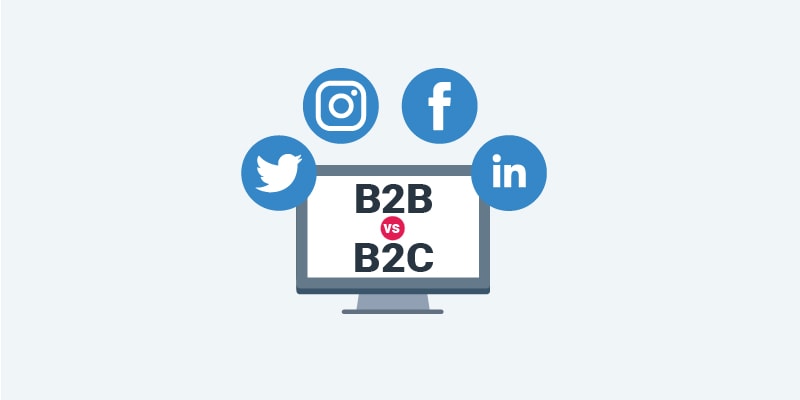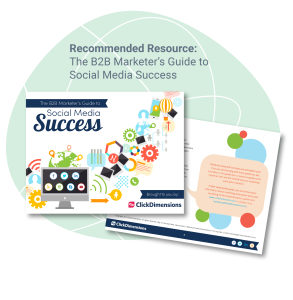Marketing
3 Ways B2B Social Media Marketing is Different from B2C
by clickdimensions

In the early days of social media, B2B businesses often struggled to find value in social channels. It was difficult for a payroll software provider or a freight company, for example, to see why they should establish a presence on a platform originally designed as a place for college students to meet or one created as a personal micro-blogging site. At the time, social media marketing didn’t seem like it had a lot to offer B2B marketers.
Since then, social media has evolved tremendously. For information and ideas both professional and personal, much of the world now relies on social media as a valued communications platform. And as social media’s evolution has occurred, so too has an evolution in the business perception of social media as a marketing tactic. Today, according to Social Media Examiner, 90 percent of all marketers report that social media is important to their business.
While consumer brands were the early adopters and first business success stories of social media, many B2B brands are using social media marketing to achieve their business goals. Despite similarities in usage, differences still exist between B2B and B2C social media efforts.
FREE Downloadable Resource: The B2B Marketer’s Guide to Social Media Success
3 Ways B2B Social Media Marketing is Different from B2C
1. Goals
Consumer and business brands alike strive to foster engagement and increase awareness through social media marketing. Beyond these shared goals, there are some differences in what each aims to achieve. For B2C marketers, direct sales are likely high on the goals list. With a more complicated sales cycle and more decisionmakers involved in the process, direct sales aren’t often an attainable goal for B2B brands. Instead, in addition to brand awareness and engagement, lead generation is more the focus for B2B marketers.
2. Platforms
Just as social media has evolved, it has also grown. While more niche networks continue to pop up and change the social landscape, there are still a handful of major players that dominate for marketers. On the B2B side, the focus is on LinkedIn, Twitter and Facebook. LinkedIn in particular offers a number of social media marketing opportunities for B2B brands, from traditional organic posting to advertising to LinkedIn Groups and beyond. YouTube is also gaining ground for B2B marketers alongside consumer interest in and preference for video marketing.
3. Content
What you post on social is just as important as why and where you post it. It also illustrates some big distinctions between business and consumer brands. Educational content serves B2B marketers well, as they seek to advance buyers through the sales cycle. White papers, eBooks, webinars, case studies and other longer-form content are all good options for posting on social. However, B2B marketers shouldn’t overlook the power and popularity of video and other visual content which have traditionally been go-to content for B2C businesses. Infographics and explainer videos, for example, have proven to be popular and engaging content among B2B audiences.
Happy Marketing!









